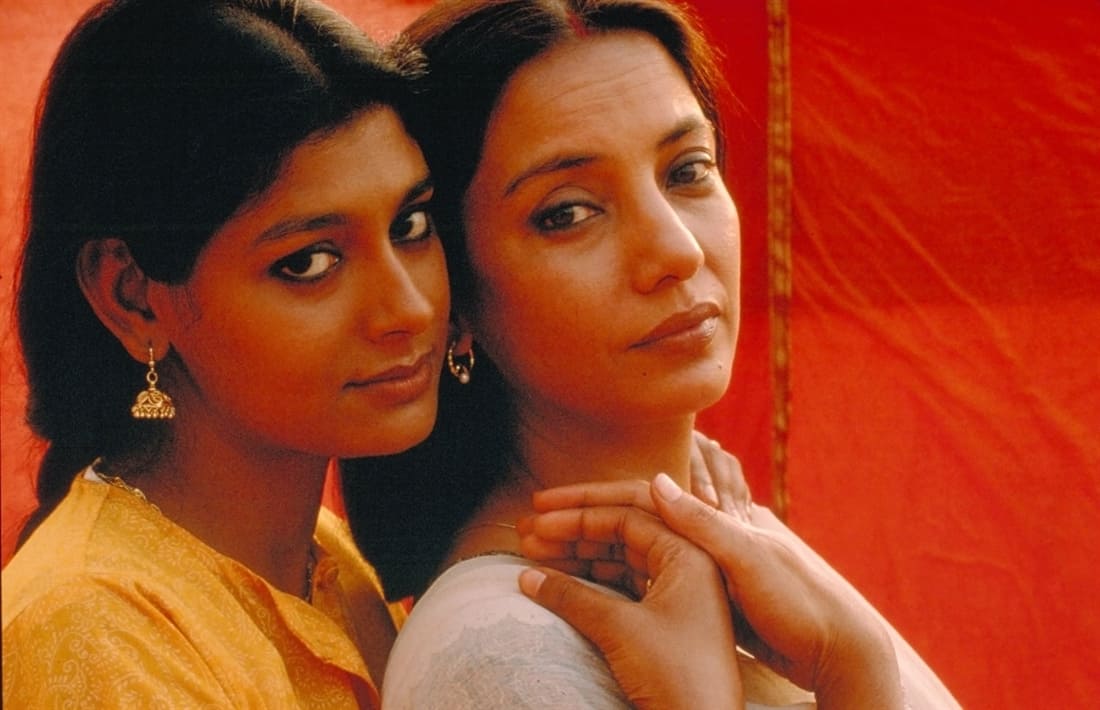Homosexual characters that left a mark on Indian Cinema

In the wake of the release of ‘Ek Ladki Ko Dekha Toh Aisa Laga’ and the #SetLoveFree campaign introduced by the team which had been widely supported all over social media, it is time to acknowledge Indian Cinema’s contribution in portrayal of same sex characters over the years.
Time and again certain Bollywood films have tried to shun the age-old stereotypes and stigmas associated with homosexuality and have actually weaved stories that matter in the context. As a result there have been birth of such homosexual characters that has managed to leave behind their important impact in the minds and hearts of the audiences-
Sita & Radha in ‘Fire’ (1996)
Considered to be one of the earliest instances of inclusion of homosexual characters in Bollywood cinema, Sita and Radha played by Nandita Das and Shabana Azmi respectively, showcases how two housewives and sister-in-laws abandoned by their own husbands in grounds of adultery and celibacy find love, solace, comfort and passion in one another. Amidst the journey of love and fight to freedom, Sita refuses to succumb to her faith and also gives Radha a will to voice out her emotions. As the first lesbian characters in Hindi cinema, they manage to leave behind a permanent impact in the mind of the audience.
Nikhil Kapoor in ‘My Brother Nikhil’ (2005)
Based off on the life of Dominic D’Souza, Sanjay Suri played ace swimmer Nikhil Kapoor, who was homosexual by orientation and was later diagnosed with HIV. At a time when acceptance of homosexuality and AIDS awareness were considerably low, the film brilliantly addressed the two subjects. It is one of those films that normalised homosexuality without any stereotypical aberration. After the two big revelations of his life, Nikhil’s personal and professional struggle and his tragic yet ultimate victory is what made the character memorable.
Rohit Khanna & Rahul Arora in ‘Fashion’ (2008)
Though the film revolves around tracing Meghna’s journey in the fashion industry as a supermodel, there are two friends that she makes along the way. The aspiring fashion designer, Rohit Khanna played by Ashwin Mushran and the extremely successful, Rahul Arora played by Samir Soni, both identifies as gay. Through these individual characterisations, contrasting elements of strongly outed and closeted characters are portrayed. Where Rohit is open and proud about his sexuality and embraces the same, Rahul submits to a negotiated feigned marriage in order to hide his orientation from his family. Rahul’s character is an eye-opener about how homosexuality is condemned even in the upper class strata of the society.
Arnob in ‘Memories in March’ (2010)
This heart wrenching yet beautiful tale showcased one of the most beautiful representations of homosexuality in Indian cinema. Arnob aka Rituparno Ghosh plays the love interest of Arati Mishra’s (Deepti Naval) late son. As the grieving mother arrives in Kolkata to collect her son’s last belongings and remnants, she comes face-to-face with what can be considered her son’s biggest concealed secret. As a conventional mother, there is the apparent initial shock and disagreement with the reality for which she blames Arnob. Although, throughout the course of the film, Arnob helps Arati to accept the truth and the duo develops a bond that grows over their shared grief, loss and love.
Jai in ‘I am’ (2011)
Director Onir’s anthological flick was one of the few films to directly address gay rights in India under Section 377, which at the then scenario still criminalised homosexuality. The final one of the four stories saw Rahul Bose as Jai who becomes a victim of the brutal homosexual abuse and exploitation prevalent in the society. Jai made the audience empathize with the character as well as the situation, subtly urging them to bring a change through the open ending of the story and injustice caused to the character.
Avinash & Dev in ‘Bombay Talkies’ (2013)
The first part of the anthology deals with the very many struggles of identifying and coming to terms with one’s sexual identity. Saqib Saleem plays Avinash, a character who is out but only at the cost of his family who refuses to accept him and Randeep Hooda plays Dev, a closeted homosexual man who is forcefully engaged into a heterosexual marital life. Harsh realities of the lack of homosexual acceptance and existence is highlighted when these two characters cross their paths and multiple lives are devastated and urges the viewers to shun off the social taboos.
Laila in ‘Margarita with a Straw’ (2014)
The coming-of-age film about the Indian teenager Laila personated by Kalki Koechlin, who has cerebral palsy, beautifully deals with the idea of exploring sexuality especially in people who are specially challenged. It is also one of those rare Indian films that had a female bisexual protagonist. Laila’s character is in a complicated same-sex relationship with blind activist Khanum and also shares a brief affair with fellow British student, Jared. Through a series of confusions and complexities the character sets in a path of self discovery and receives immense acclaim from viewers.
Rahul Kapoor in ‘Kapoor & Sons’ (2016)
The character of Rahul Kapoor played by Fawad Khan in Shakun Batra’s film is one of the few homosexual characters in mainstream commercial Bollywood Cinema which did not have any stereotypical representation of homosexuality. The truth about Rahul’s orientation was a subtle inclusion to the plot of the drama, very simple yet effective. There was no excessive dramatization and a very relatable reception by a mother which ultimately resolves in acceptance and settles in a happy ending.
Professor Siras in ‘Aligarh’ (2016)
Professor Ramchandra Siras’ biopic saw Manoj Bajpayee in the lead role as a Marathi Professor of Aligarh University. Based on the true events of the suspension and exploitation of Professor Siras on grounds of homosexuality and immorality, the film strongly condemned criminalisation of homosexuality under Section 377 of IPC. Through the character’s tragedy and pathos, the audience is bound to feel for the community and is asked to stand in solidarity for equality.
Considered to be “the most unexpected romance of the year” for showcasing the first ever lesbian love story in a mainstream commercial Bollywood film, after the appreciation the work and effort of team ‘Ek Ladki Ko Dekha Toh Aisa Laga’ has seen, one can hope that Indian Cinema continues to represent LGBTQ+ community through a plethora of great characterization and storyline.
– Varsha Roy









